Sensory welcome table
It is one of the first installation visible from the entrance: a welcome table with a plan and in front of it, a mascot playing the role of conductor bellow ten screens. All of them is interconnected and produces a new kind of navigation to discover and present the exhibition.
Discover the case study Photo credit : Francois Amri
Photo credit : Francois Amri
Design & development: 2makesense SAS - François Amri and Benjamin Jaubert.
Interactive quiz on welcome table
Five players can challenge themselves on a timed interactive quiz. In the same time, the mascot challenges the audience and orchestrates the flow of questions. At the end of each question, the table displays a representation of the results in form of data-visualization, allowing the visitors to compare their answers to those brought by other visitors since the launching of the experience!
Discover the case studyTeaser for the IOS / Android mobile app
Next to the welcome table, a three-screen broadcast system presents the next coming mobile application.
The broadcast content usefully exploits the three screens and comes to recall the orchestration presented on the welcome table, while the screens stacking directly echoes the following experience.
Discover the case study Learn more about the mobile app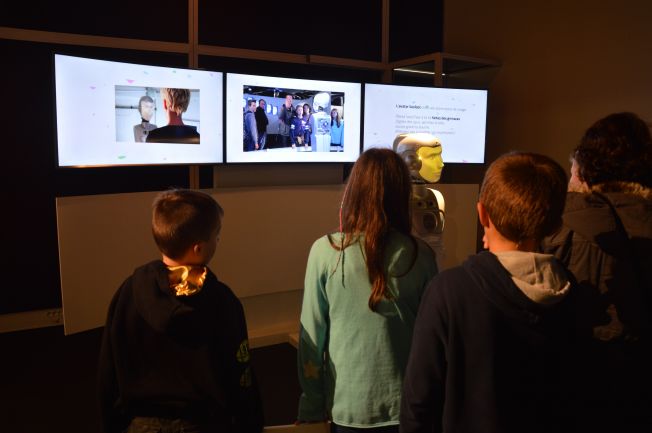 Photo credit : Benjamin Jaubert
Photo credit : Benjamin Jaubert
Furniture design and digital experience: François Amri. Technical integration: JonLab. Manufacture of furniture: GL-Event.
The emotional robot
On a piece of aerial furniture stands the robotic bust Socibot®, a robot designed by the firm Robotespian®. This robot has the ability to integrate dialogues and reproduce facial expressions. The custom-designed triptych and digital content create a strong identity in the tone of the exhibition and provide a unique playful experience.
Discover the case studyLounge of the future
The lounge of tomorrow could help us, plan our tasks and offer us the gift of ubiquity. This space with a unique design also allows to discover, in complements of different connected objects, the holographic technology through a virtual butler. Added to that, Beam® tele-presence robots can be driven and can interact in the exhibition.
Discover the case study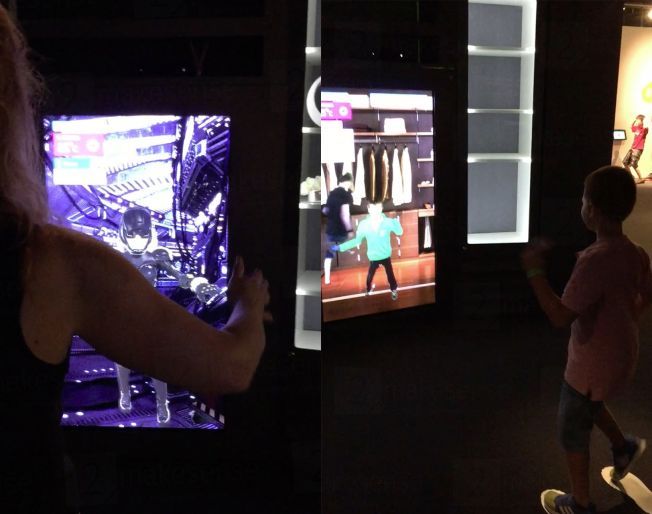 Photo credit : Francois Amri
Photo credit : Francois Amri
Design of the components of user interface and identification of ground marking: François Amri. AR Design/Development: Gimbal Cube.
Dressing room in augmented reality
An intuitive installation to try clothes!
The visitors has just to come in front of the screen and follow the instructions. There are two devices, one for women dressing room and the second for men dressing room, but visitors are free to choose the one they want!
Interactive mapping room
The dreamed way to transform a space. Through an intuitive tablet navigation, the visitor can dynamically customize the decoration around them, or even set the entire room into sensory universes!
A real-time 360° immersive experience that does not involve VR headsets!
Discover the case study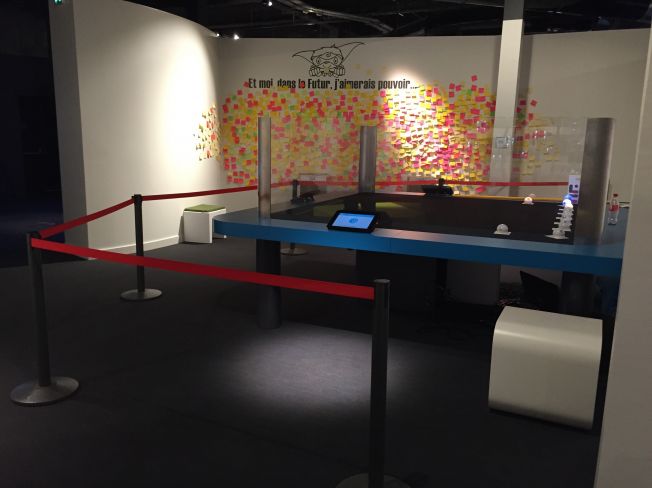 Photo credit : Francois Amri
Photo credit : Francois Amri
Research & design (furniture/interface): François Amri. Integration and developments: CRIIF.
Robotic balls trail
The discovery of Spheros® robotic balls from a table surrounded by three Microsoft Surface tablets. At each session, players can take control of one ball, identifiable by their individual color. The interfaces are intuitive and adopt the respective point of view of each participant and the balls alternately switch between sessions to maintain their batteries loads.
This experience is replaced after five months of commissioning. Unfortunately the handling was not suitable for the context of continuous operation, losing the autonomy of the experience. A new activity has been completely redesigned for this space!
Discover the case studyVirtual arena in augmented reality
An interactive game allowing the participants to drive to the choice: a car, a drone or a robotic ball. Each of the vehicles have different characteristics in a futuristic universe. An other originality about this table is its ability to detect in real time any object placed on its surface and transform it into an obstacle, thus allowing an infinite freedom in the design of circuits and putting everyone to contribution!
The game is known for its playfulness and gives a smile to everyone who has known the famous game "Micro Machines" :)
Discover the case study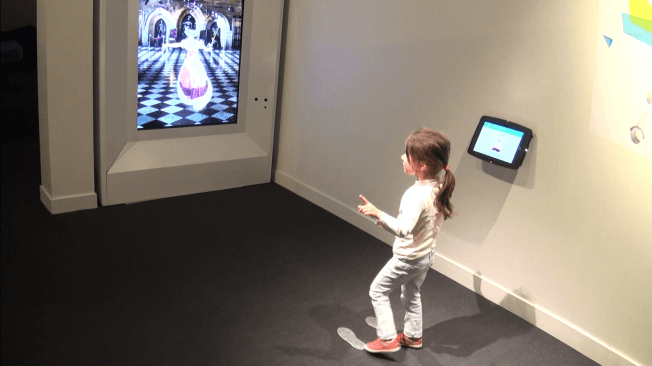 Photo credit : Francois Amri
Photo credit : Francois Amri
Study, artistic direction, integration and interaction design of user interfaces: François Amri and Benjamin Jaubert. Design/development AR: Gimbal Cube.
Children's costumes in augmented reality
Let your children the opportunity to try a multitude of costumes while leaving room for their imagination. In front of the screen, they will be able to discover at their height an application adapted for them. Easily understandable, its ergonomics allows a grip almost instantaneous.
Adult... but with a child's soul? Let yourself be tempted too!
Discover the case studyMolecular gastronomy fridge
Through a glass/translucent screen, the refrigerator of the future is presented as a real interactive personal assistant. he could tomorrow offer us cooking recipes according to the food he contains and help us with their preparations such as candy recipes, molecular cocktails, or make pasta without eggs...
A perfect introduction before the visitor continues his experience at the BarLab' for a tasting of molecular cuisine!
Discover the case study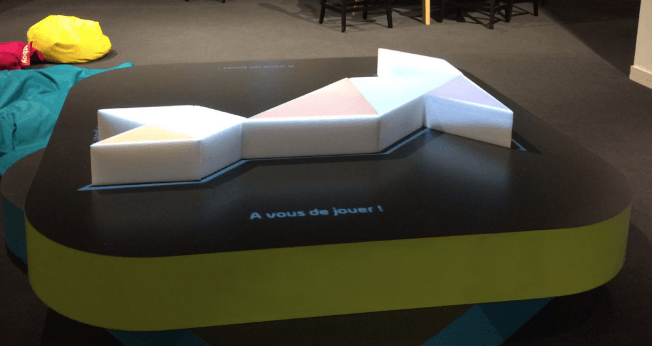 Photo credit : Francois Amri
Photo credit : Francois Amri
Design & developpment : 2makesense SAS - François Amri et Benjamin Jaubert.
Giant tangram
Visitors are invited to solve large scale puzzles, manipulating real-life pieces alone or with others. This interactive game has no less than eleven figures with unique combinations to discover!
Discover the case study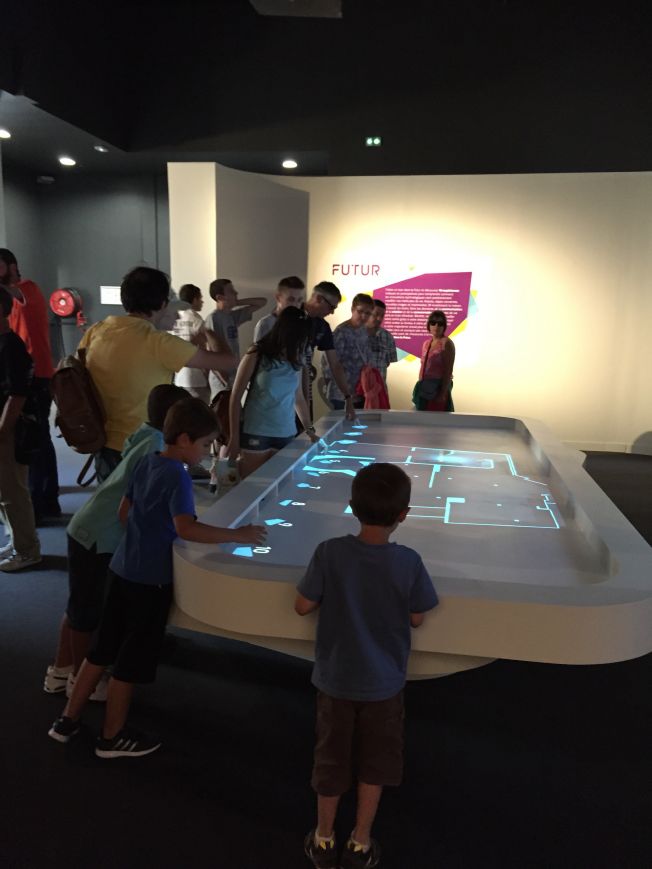 Photo credit :
Photo credit :  Photo credit :
Photo credit : 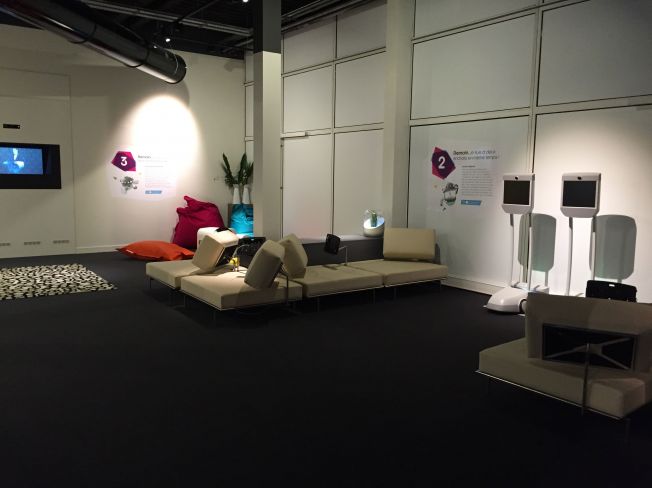 Photo credit :
Photo credit : 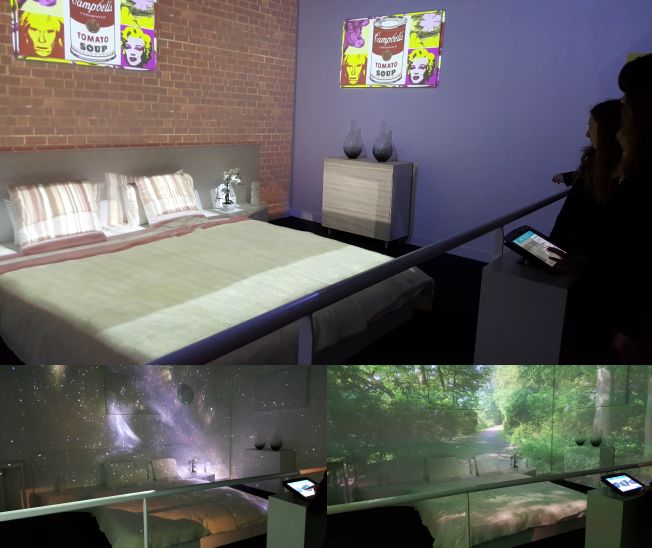 Photo credit :
Photo credit : 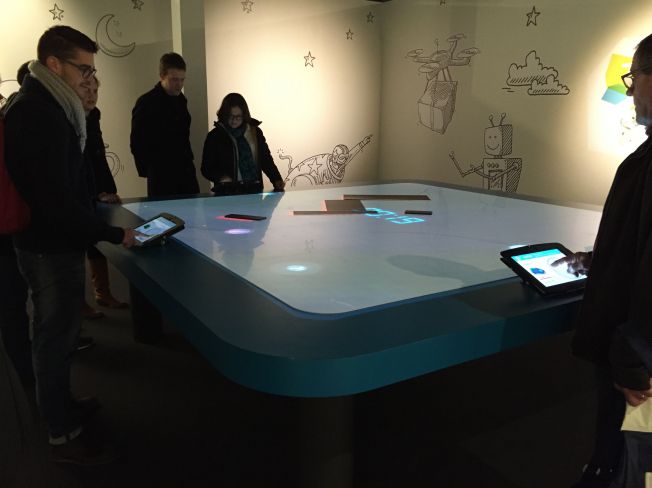 Photo credit :
Photo credit :  Photo credit :
Photo credit : 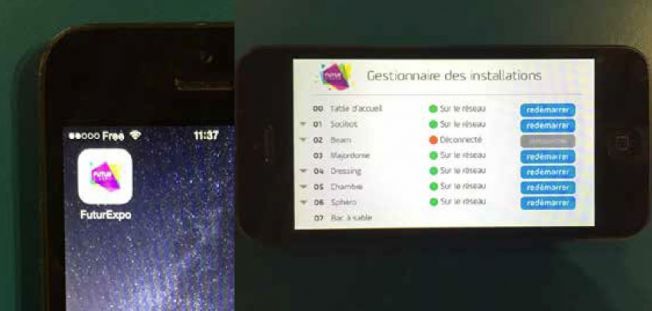 Photo credit :
Photo credit : 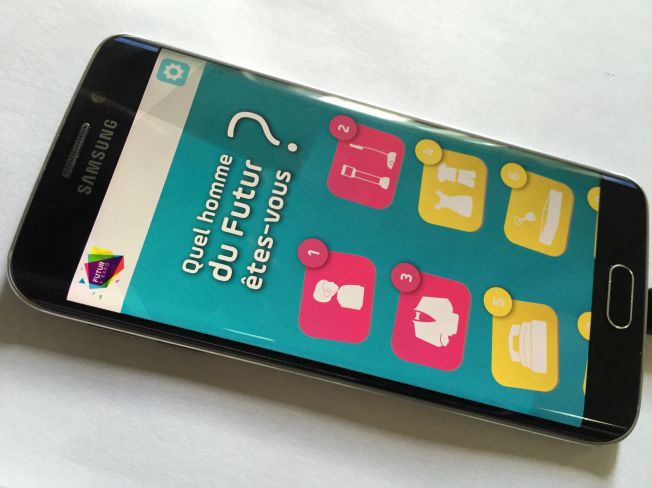 Photo credit :
Photo credit :